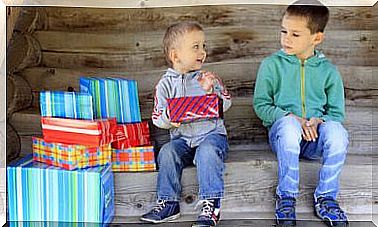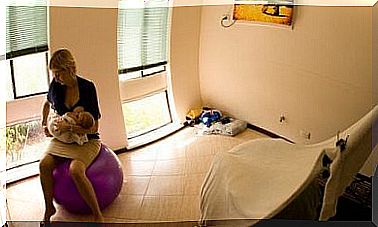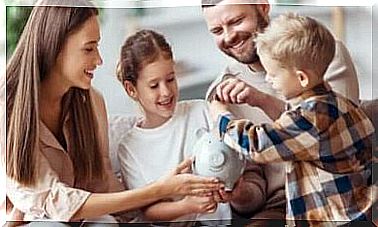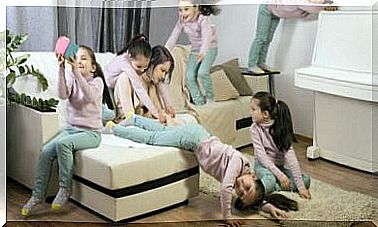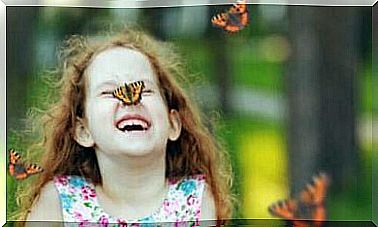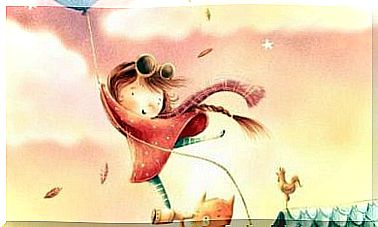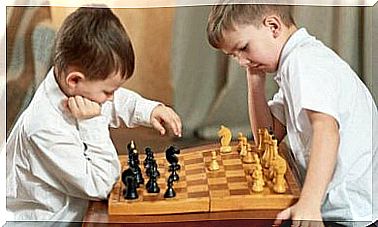Discover These Fun Facts About Baby Teeth
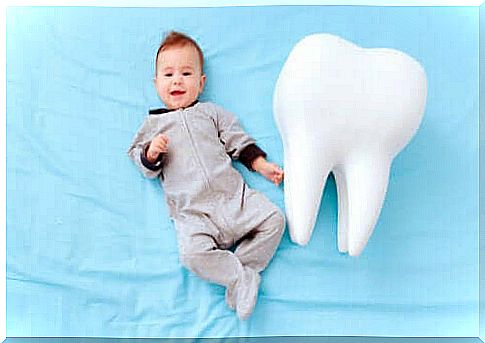
In this article, we share several fun facts about baby teeth that are worth considering. Because in order to take good care of your little one ‘s mouth, it is important to know something about the structures from which it is made.
In the following article you will find out when the temporary teeth are formed, how many there are, and what they are for. We also tell you how to take care of them to maintain the oral health of children.
The milk teeth begin to form in the womb
A child ‘s teeth begin to form when the baby is developing in the womb. The process begins between the sixth and eighth week of pregnancy and continues throughout the pregnancy.
At the time of birth, the milk teeth are already fixed in the jaws, where they remain until the moment of ejection. When babies come out of the womb, the teeth are not visible in the mouth, but they are there, hidden under the gums.
This is one of the fun facts about baby teeth that is important to know. Knowing that the teeth are already formed during pregnancy allows us to give them the attention they need right from the start.
How? Good nutrition during pregnancy. Eating a varied and balanced diet, with sufficient calcium, phosphorus, vitamins and proteins, helps ensure the availability of nutrients for the mineralization of the forming teeth.
Emergence of the milk teeth
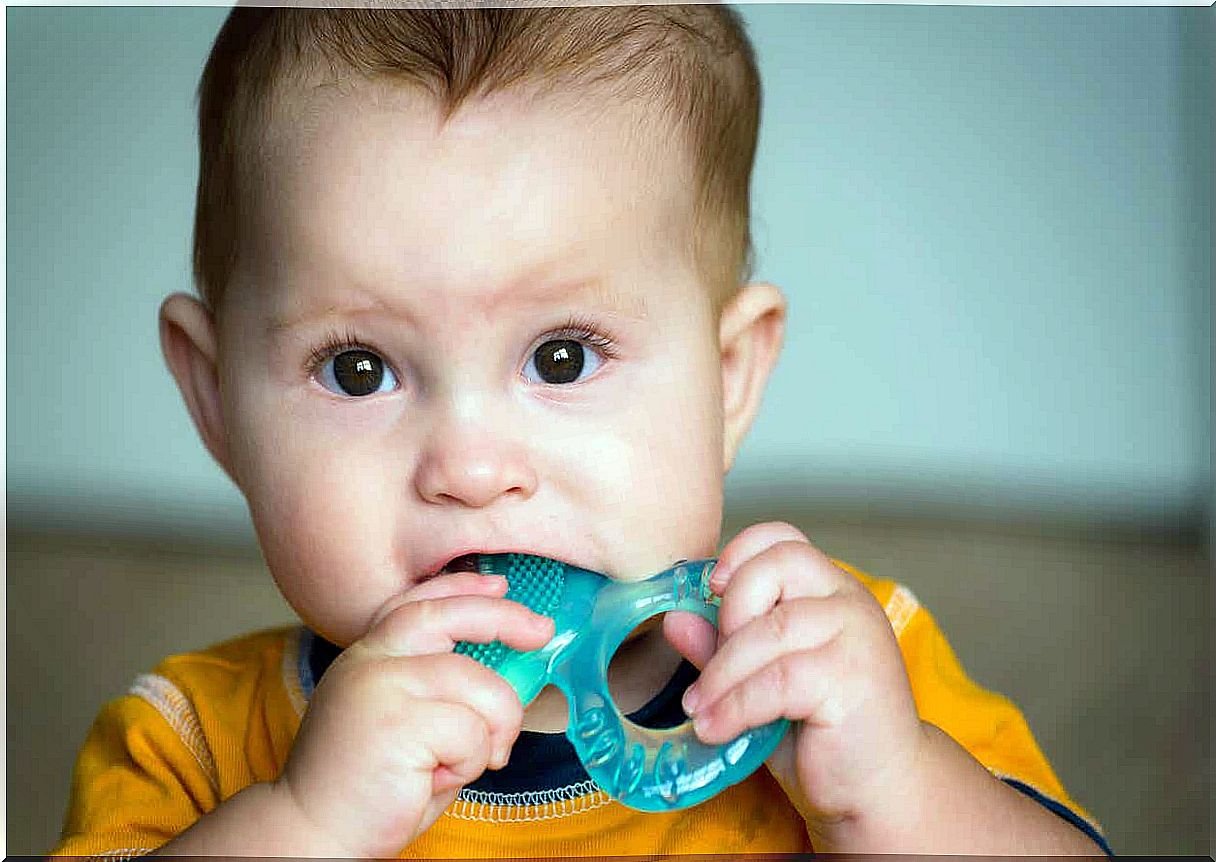
Baby teeth start to come through when babies are 6 to 8 months old. In reality, this age is an estimate, as each child has their own growth rate. In some little ones, teeth appear earlier and in others it takes longer. The process usually ends around the age of 3 years.
For the tooth to appear in the mouth, its crown must break through the gums and make its way into the oral cavity. This is an uncomfortable time for some children and it is common for them to feel irritable and nervous.
Other symptoms, such as excessive drooling, the need to put everything in their mouth, sudden crying, and difficulty sleeping can also occur at this stage. It is a challenge for adults to guide their little ones through this process with lots of love and patience.
20 teeth
Also on our list of fun facts about baby teeth is the number of teeth they have. And the fact is that the number of temporary and permanent teeth are not the same; Babies have 20 baby teeth, but eventually 32 permanent teeth .
The 20 baby teeth are in both jaws: 10 in the upper jaw and 10 in the lower jaw. In each arc there are 5 teeth to the right and 5 to the left of the centerline. There are 8 incisors – 4 central and 4 lateral – 4 canines, and 8 molars.
What do baby teeth look like?
The appearance of temporary teeth is also one of the fun facts about baby teeth. Their color is much whiter and their size is smaller than that of permanent teeth.
- The teeth have a visible part that sits in the oral cavity, we call this the crown. Another part is in the bone, covered by the gums. This is the root. The purpose of the root is to hold the teeth in place.
- The external structure that covers the crown of the teeth is the enamel, which is a hard tissue that protects them.
- Inside is the dentin, the most extensive layer, with a hardness similar to that of bone.
- The innermost part is the pulp, where the nerve endings and blood vessels are located.
These last two tissues occur in both the crown and the root.
What are milk teeth for?
Although many adults think otherwise, baby teeth are very important for children.
They are essential for chewing, eating and speaking as they are involved in the pronunciation of several phonemes. They also have a social and aesthetic role, as children express themselves and relate to others by smiling.
At the same time, they have the very valuable function of freeing up space for the permanent teeth that develop in the jaws. Therefore , when the baby teeth erupt, they act as guides that allow the correct placement of the permanent teeth.
When do they drop out?
As with eruption, when the baby teeth fall out to be replaced by the permanent teeth depends on each child. In general, the process starts between the ages of 5 and 6 and ends around the age of 12-13. This is accompanied by the growth of the jaws.
The permanent teeth reabsorb the roots of the baby teeth, which begin to move until they fall out. Then the permanent tooth appears in the mouth to replace the tooth that has fallen out. During this period, both types of teeth coexist in the mouth, which is why it is called mixed dentition.
The need to care for baby teeth
Now that you know these fun facts about baby teeth, you will understand the importance of keeping these teeth healthy. They play a very important role in the lives of our little ones.
Care of a child’s teeth should begin at conception, with proper maternal nutrition during pregnancy and good obstetrical checkups. Once the baby is born, it is time for the parents to continue to take care of the health of the oral cavity.
Oral hygiene should begin before the teeth appear by cleaning the gums with a clean, wet gauze pad. Then, when the teeth appear, it is important to start brushing them.
Adults should take care of their children’s oral hygiene until they are able to do it themselves, which happens after about 6 years of age. After that, they should supervise them and guide them in the habit.
From the appearance of the teeth it is important to maintain good oral hygiene, with a toothbrush and the amount of toothpaste appropriate to their age, and to supplement this with the use of dental floss. In addition, it is essential that children eat nutritious food and avoid foods with a high sugar content.
Prevent complications
Regular visits to the pediatrician and dentist from the first year of life help prevent many problems in the mouth.
By monitoring jaw growth and eruption of teeth, detecting the presence of harmful habits and diagnosing oral diseases early, any condition can be tackled in time. This avoids complications and more difficult or complicated treatments.
Therefore, adults should take care of the oral health of their children. So the little ones can smile with confidence during their childhood.
